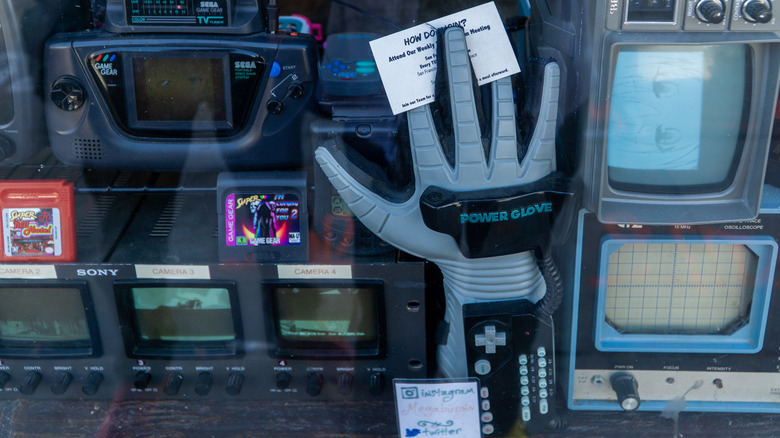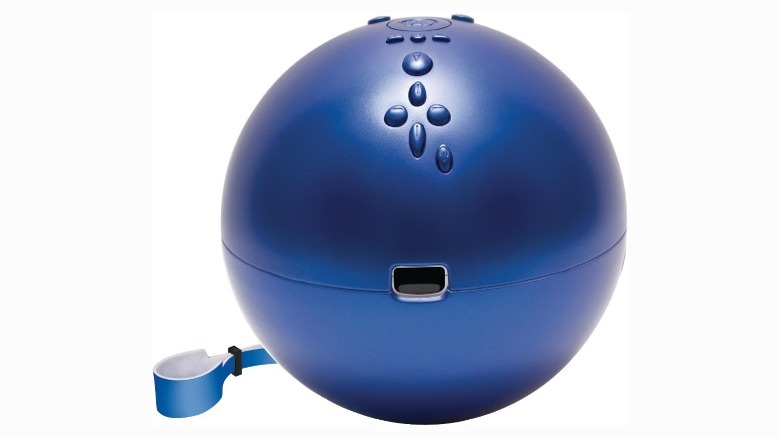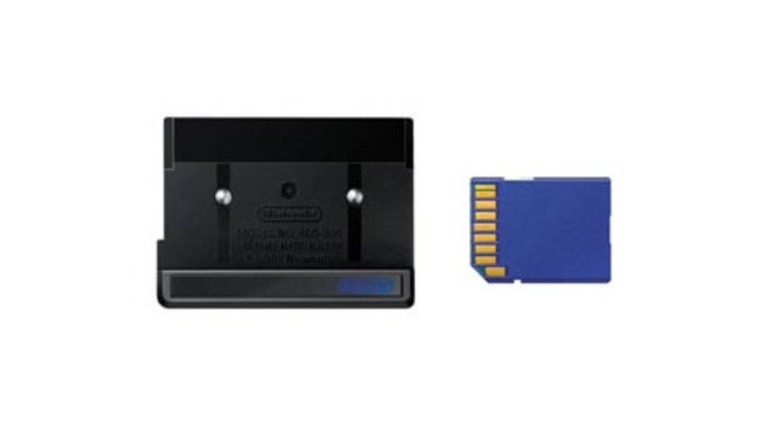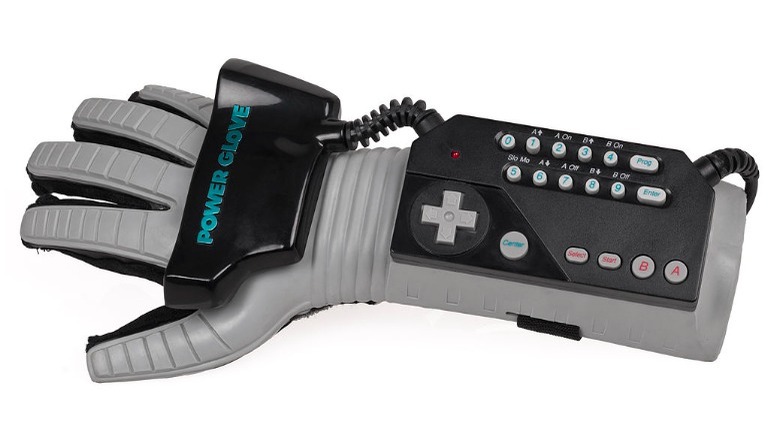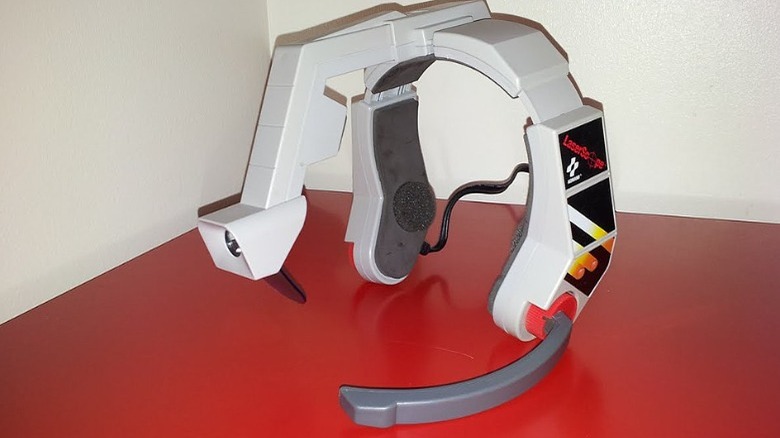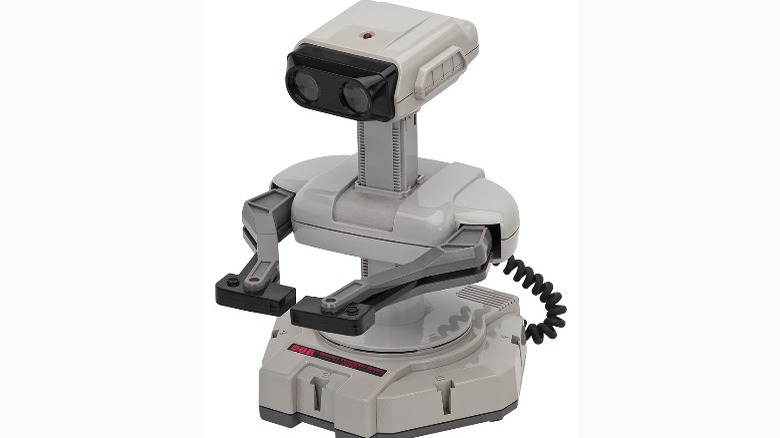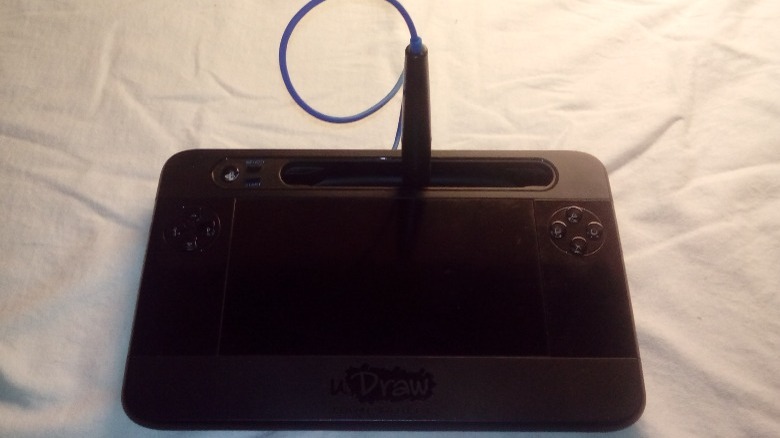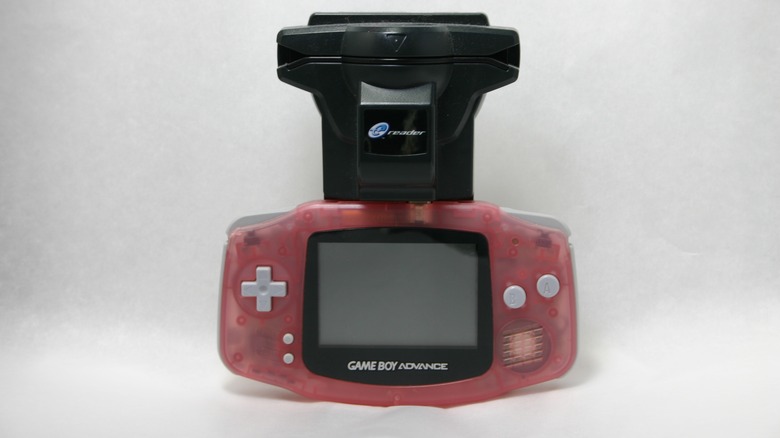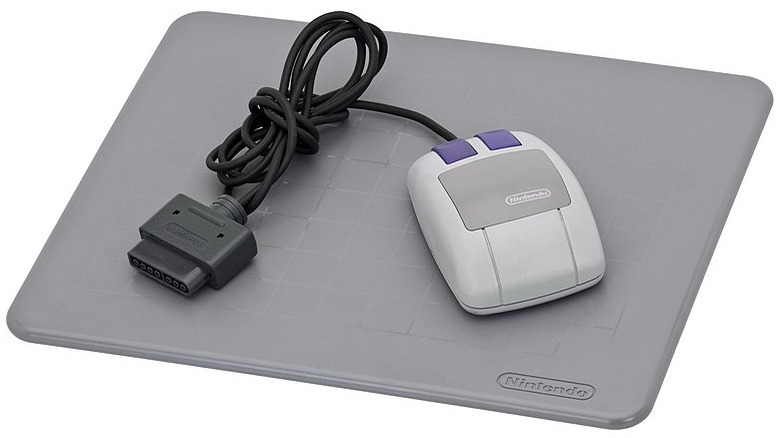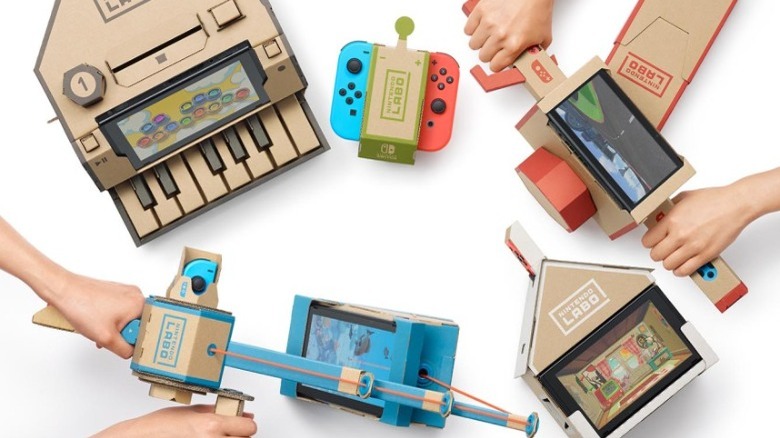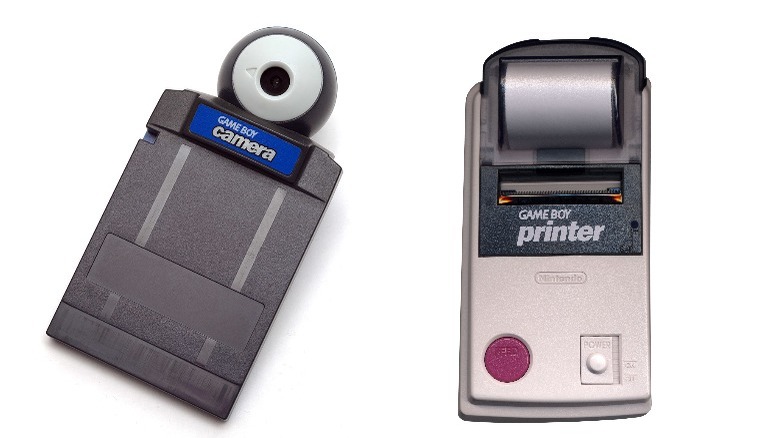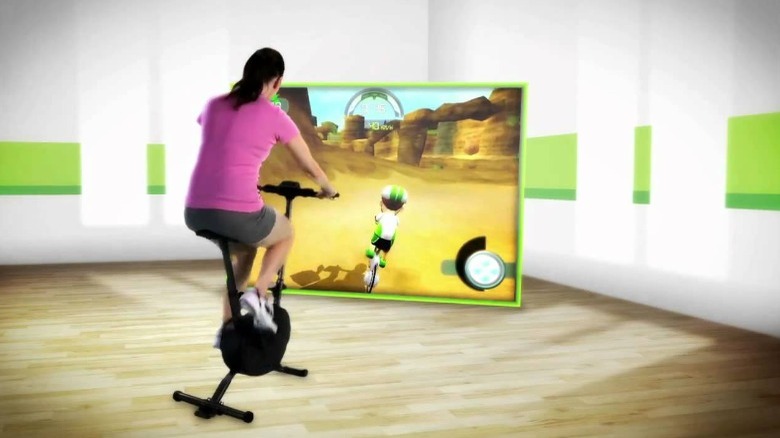11 Of The Weirdest Peripherals Ever Made For Nintendo Systems
Throughout the history of Nintendo, the Japanese firm has always experimented with new and interesting features. You can look at things such as rumble feedback, save games, and motion controls to see just how willing Nintendo is to try different things.
Nowhere is that more clear than with peripherals and accessories that have been created for the wide array of consoles and handheld systems over the years. While Nintendo has released the standard kind of devices you'd expect from a gaming manufacturer, such as more advanced controllers, it has also been involved in releasing some seriously weird peripherals. While you may have heard of or seen some of these odd peripherals, others are relatively rare due to a lack of success. Nevertheless, some of these weird peripherals put even the most bizarre controllers of all time to shame when it comes down to being downright wacky.
Wii Bowling Ball
When "Wii Sports" was released on the Nintendo Wii as a launch game in 2006, it became a smash hit. Selling more than 80 million copies, the game entered mainstream culture and was featured in everything from television shows to documentaries. Not only was it a fun and deceptively easy title to play, it also perfectly showcased the Wii's motion controls. Predictably, it went on to spawn dozens of accessories and peripherals intended to help players get fit and simulate the various games more realistically. These ranged from plastic tennis rackets to fake boxing gloves.
However, the weirdest peripheral of all of the "Wii Sports" products was the Wii Bowling Ball. Manufactured and released by CTA Digital, this wasn't a mere plastic accessory but rather a peripheral that could act as a controller. The Wii Remote could slot inside the bowling ball and then the user could effectively use the ball as a controller as it had buttons and everything else you need to play. Along with the three holes for your fingers and thumb, it also featured a wrist strap to help prevent the inevitable accidents where a bowling ball would end up in someone's television screen.
Nintendo Play-Yan
Nintendo's consoles and handheld systems have almost always focused on gaming. Even today, streaming services like Netflix are not available on the Nintendo Switch. But that doesn't mean the Japanese company has always ignored other types of media. In fact, Nintendo actually released a dedicated media player for the Game Boy Advance Micro and Nintendo DS that allows users to play MP3s and other file types to listen to music. Known as the Play-Yan in Japan and the Nintendo MP3 Player in Europe, the device launched in 2005.
It effectively acts as a larger game cartridge that can accept an SD memory card and allow the content on it to be played on select Nintendo handheld consoles. As well as music, the Play-Yan also supports MP4 files, allowing players to watch videos on their Game Boy Advance Micro and Nintendo DS. It also has a dedicated audio jack, providing better sound quality than you get from the standard hardware. The only real problem with the peripheral is that you need to wake up the console and navigate folders to switch songs, which can be annoying if you have to do so every few minutes.
[Featured image by Joonasl via Wikimedia Commons | Cropped and scaled | CC BY-SA 3.0]
Power Glove
Nintendo's propensity for creating weird and wonderful peripherals extends all the way back to the company's earliest forays into gaming. The NES was wildly successful — selling more than 60 million units — and helped revive the gaming industry after the collapse of 1983. However, it came with its fair share of wacky peripherals. Perhaps the most famous of them was Mattel's Power Glove, a futuristic sci-fi looking gadget that didn't quite catch on.
The Power Glove was worn like any other large glove and completely covered the hand. It had all of the buttons players would be familiar with on the NES controller, including a D-pad and A and B buttons. Users could program buttons with a series of number inputs as well as utilize the motion controls to interact with games. This system used ultrasonic speakers and microphones to determine the position of the Power Glove.
Visually, the glove was based on the 1987 film "RoboCop," but this distinctive appearance wasn't enough to make it a success. Ultimately, only two games were released to take advantage of the Power Glove's unique features. The peripheral failed to find an audience and was quietly shelved.
Konami LaserScope
The NES Zapper was not the only light gun in town for the original Nintendo console. A number of companies produced their own versions to try and cash in on the success of games such as "Duck Hunt." The Konami LaserScope, a headset used with the NES system, wasn't a traditional light gun. Rather than a gaming peripheral, the LaserScope looked more like something the Rebel Alliance pilots from "Star Wars" would wear when in an X-Wing fighter.
It was specifically designed for the game "Laser Invasion" but could work with any game that was compatible with light guns. In terms of actual functionality, the LaserScope came with an eyepiece that hovered over the right eye of players as a way of aiming without a traditional reticle. The firing mechanism was also activated by the player speaking, making it an early example of voice-activated gaming accessory. Thanks to the fact it plugged into the audio port of the NES, it could also play in-game sounds. However, the product did face some criticism for the microphone being too sensitive and activating through background noise.
[Featured image by Evan-Amos via Wikimedia Commons | Cropped and scaled | CC0 1.0 Universal]
R.O.B.
The R.O.B. — otherwise known as the Robotic Operating Body — is a peripheral for the NES that launched alongside the console. Worth in excess of $500 today, the R.O.B. was marketed in such a way to try and distance the NES from video games following the devastating crash of 1983. With customers potentially wary of video games at this time, Nintendo wanted to give the impression that the NES was more of a toy and entertainment device, hence its name. Unfortunately for the R.O.B., it didn't last long, and the quick success of the NES meant that it was no longer necessary to promote an alternative image.
Although it looks like quite a sophisticated piece of equipment, R.O.B. couldn't actually do all that much. It was capable of rotating on its axis and moving its arms and head to react to things that were happening on the screen. There were two games made especially for the device — "Gyromite" and "Stack-Up" — before it was discontinued and largely forgotten.
[Featured image by Evan-Amos via Wikimedia Commons | Cropped and scaled | CC BY-SA 3.0]
uDraw Game Tablet
The uDraw GameTablet is one of the more recent peripherals for a Nintendo console with a very strange appearance. Developed by publisher THQ, the tablet and its accompanying stylus allow players to draw onto the touch-sensitive screen and send their artwork directly to games on a console. Launched in 2011, it was available for the Nintendo Wii as well as the PlayStation 3 and Xbox 360. As well as "uDraw Studio," a variety of other games were also released, including "uDraw Pictionary" and "SpongeBob SquigglePants."
The uDraw GameTablet came at a time when the industry was experimenting with new types of controllers such as the Wii Remote and Kinect camera system. It received positive reviews and was expected to be a hit, creating a whole new ecosystem for dozens of titles. That never materialized, though, and the uDaw GameTablet proved to be a huge financial failure, with the fad ending as quickly as it started. According to reports from the time, the revenue for the device was $100 million dollars lower than expected, with THQ ending up sitting on more than one million unsold units.
[Featured image by owner of the fantastic shirts via Wikimedia Commons | Cropped and scaled | CC BY-SA 4.0]
Nintendo e-Reader
The Nintendo e-Reader was a peripheral that was released for the Game Boy Advance in 2001. It was essentially a device that allowed players to add new content and features to games by scanning special e-Reader cards. It fits directly into the cartridge slot of the Game Boy Advance in place of a game, meaning it is also compatible with a variety of other Nintendo handheld systems and consoles that can play original Game Boy Advance games. This includes the DS Lite, GameCube, Game Boy Micro, and Game Boy Advance SP.
The Nintendo e-Reader works by utilizing an LED scanner to read dot code data from proprietary cards. The system is very similar to barcodes on products, with the dot code data adding new content rather than unlocking data already on a game cartridge. Different e-Reader cards can contain barcodes of various sizes, with some content requiring multiple cards due to the sheer amount of data needed.
The type of content that can be contained on e-Reader cards can range from NES games to new items and features in Game Boy Advance games. In some cases, this might include adding extra trainers to fight against in "Pokémon Ruby and Sapphire" or adding new mini-games in "Mario Party."
Super NES Mouse
A good gaming mouse can help you win more games and make playing for long times more comfortable than it might be with a standard mouse. However, this is an accessory that is usually associated with PCs rather than a console, with the SNES and other systems traditionally using controllers as the main form of input. Some modern consoles, such as the Xbox Series X|S and PlayStation 5, do support a keyboard and mouse but only for specific games or for browsing through the user interface. But what you may not know is that Nintendo also released a mouse for the SNES way back in 1992.
The mouse, which is significantly smaller than a traditional computer mouse, was designed to be used with the game "Mario Paint." The mouse made it easier to draw, manipulate images, and create artwork, especially compared to what would have been possible with a standard gamepad. However, other games were subsequently developed to make use of the mouse, which could be bought separately or as part of a bundle with "Mario Paint." Third party manufacturers also produced similar products, such as Hyperkin's Hyper Click Mouse. This used an optical system rather than the rolling tracking ball of Nintendo's mouse.
Nintendo Labo
Along with the ability to track movement through its controllers, the Nintendo Switch introduced many innovations, like its handheld touchscreen. And similar to the Nintendo Wii, the Switch also had a lot of peripherals and accessories that were developed to take advantage of its unique capabilities. One of the oddest of these is Nintendo Labo, a toys-to-life system that is made up of two parts: One is a video game that plays much like any other on that system, and the other is a cardboard construction kit that allows users to construct their own creations.
Players can buy different Labo Kits that include different preset items. Once put together, a Joy-Con can then be placed into the constructed object to control action in the game. This can range from a fishing rod to reel in fish to a piano that can be used to play music within the game. There are kits to create remote-controlled cars, a house, and a motorbike. According to Nintendo, Labo was designed for young children to have a chance to experiment with engineering and programming.
Game Boy Camera & Printer
The Game Boy Printer & Camera are two devices that were developed to work with the original Game Boy. The two products were released in the late 1990s and intended to expand the capabilities of the handheld system. The thermal printing attachment could print various images captured from the Game Boy Camera. Users could purchase thermal paper designed specifically for the Game Boy Printer, which came in a variety of colors.
Unlike the Game Boy Printer, the Game Boy Camera inserted into the cartridge slot of the Game Boy, with the camera sitting atop the handheld system facing backwards. This allowed players to see images that had been taken on the screen in the same way as a rear-facing smartphone camera. Images captured with the camera could be printed using the Game Boy Printer and also be used in certain mini-games that came with the device.
[Featured images by Ashley Pomeroy and Prime Blue via Wikimedia Commons | Cropped and scaled | CC BY-SA 4.0 ]
Cyberbike
The launch of the Nintendo Wii heralded a time where developers and publishers attempted to take advantage of a fitness trend by releasing exercise-based games. Motion controls and early success with games such as "Wii Sports" led to many people seeing promising potential in the console outside of just playing games. Yet no company went quite as far as BigBen Interactive, which released an actual static exercise bike for the console.
Both the device and accompanying game came under the moniker "Cyberbike" and essentially put players into the shoes of a cyclist. Launched in 2009, the peripheral plugged into the GameCube port of the Wii and worked like a normal pedal bike. It could be used to play a variety of modes in the game, including a cycling race, a submarine level, and a mine cart chase. The main complaint with the product was that it offered very little resistance despite having various difficulty settings, making it difficult to have a satisfying workout. But for $99, it was a fun if weird peripheral for a console that had a lot of strange accessories and gadgets.
A later "Cyberbike: Magnetic Edition" was released in 2011 in response, offering up to 286 lbs. of magnetic resistance to make workouts more challenging. However, that came at a cost of $199.99 — which is unfortunately more expensive than the Nintendo Wii itself.
